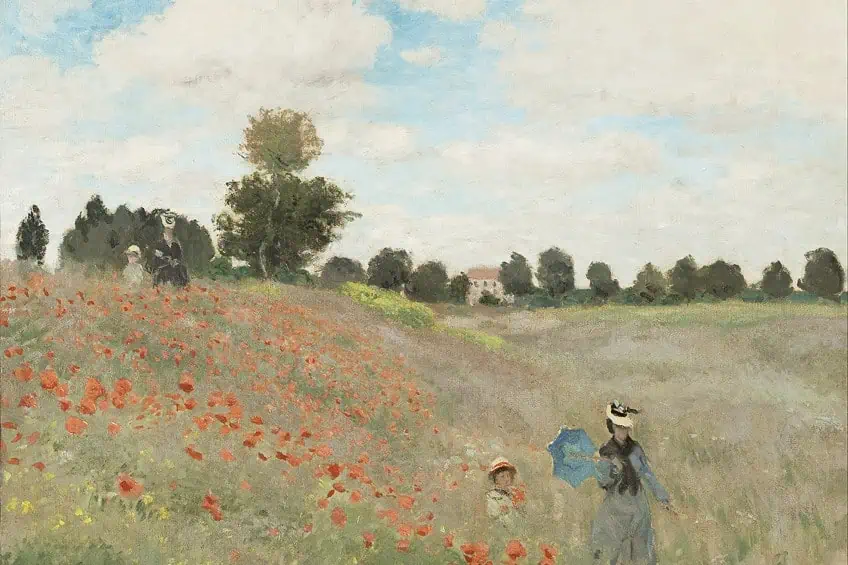“Wild Poppies near Argenteuil” by Claude Monet – A Deep Dive
Wild Poppies near Argenteuil by Claude Monet is a famous illustration of an Impressionist painting. In this article, we will look closer at this poppy field painting through a contextual discussion of Monet’s career and personal life when the painting was created, as well as contextualizing it within the socio-political climate of France at the time. We will also complete a visual analysis of the poppy field painting to understand what makes it such a prolific Impressionist work of art.
Contents
Artist Abstract: Who Was Claude Monet?
Claude Monet was an Impressionist born in Paris in 1840. He was a key figure in the development of the Impressionist style and is widely considered one of the most influential artists of the late 19th century. Monet’s childhood was marked by a passion for art and a desire to create, which he would carry with him throughout his life.
Monet trained at the Academy of Fine Arts in Le Havre, where he was exposed to the works of the Dutch and French masters.
He was particularly drawn to the works of the Barbizon School and the French Impressionists, and it was through these artists that he was introduced to new techniques and approaches to painting. Monet’s early works were characterized by their loose and spontaneous brushstrokes, and he quickly gained a reputation as a master of capturing light and color on canvas.
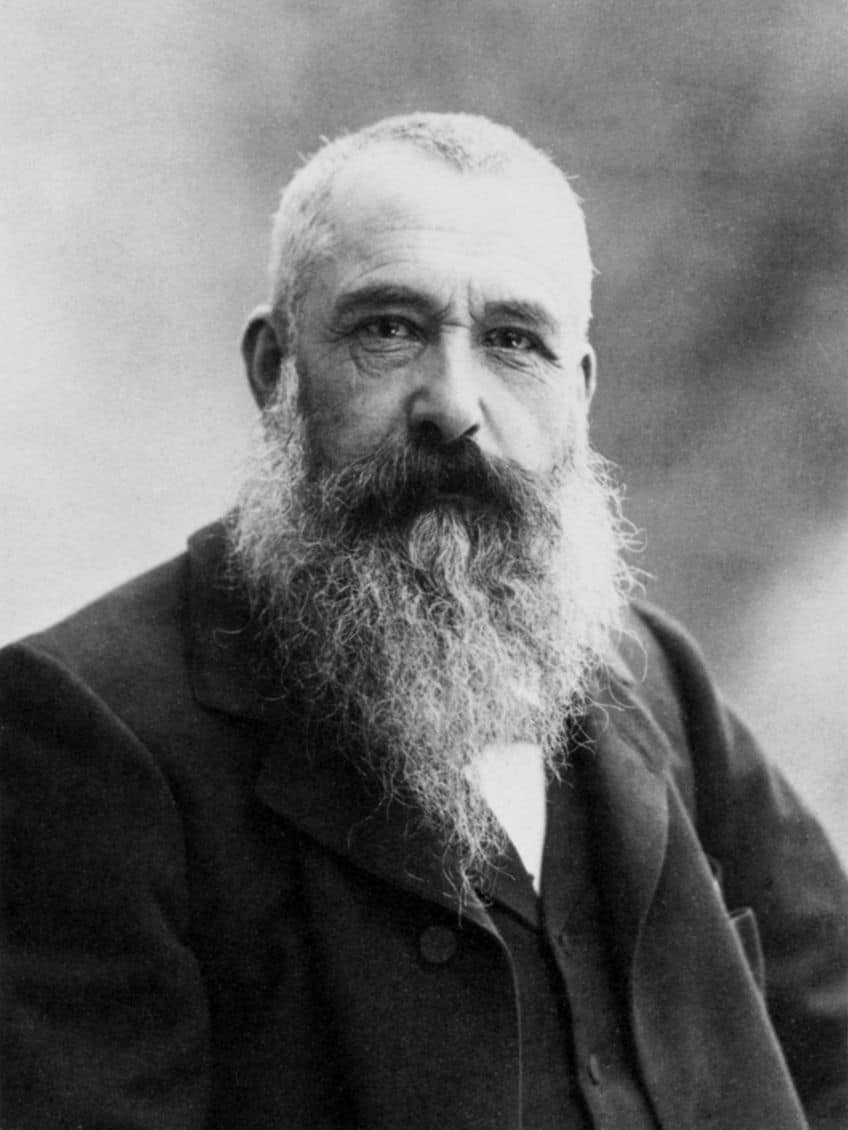
Monet’s major career achievements are numerous and include some of the most iconic paintings of the late 19th century. His most famous works include Water Lilies (1840-1926), Impression Sunrise (1872), The Haystacks (1890-1891), The Rouen Cathedral (1894), and Woman with a Parasol – Madame Monet and Her Son (1875).
These paintings are considered masterpieces of the Impressionist style and are widely considered some of the most significant paintings in the world.
Monet’s influence on Impressionism and art history, in general, cannot be overstated. He was one of the leaders of the Impressionist movement and was instrumental in pushing the boundaries of traditional painting styles. Monet’s innovative approach to capturing light and color, as well as his use of loose brushstrokes, would go on to inspire countless artists and continue to influence the art world to this day.
Monet’s Poppy Field Painting in Context
| Date | 1873 |
| Medium | Oil on canvas |
| Type of Painting | Landscape and historical painting |
| Movement | Impressionism |
| Dimensions (cm) | 65 x 50 |
| Location | Musée d’Orsay, Paris, France |
Wild Poppies near Argenteuil by Claude Monet is a brilliant example of the Impressionist style and a testament to Monet’s talent as an artist. This section of the article will look at what happened during this time in Monet’s life, career, and the socio-political climate in France.
Wild Poppies near Argenteuil by Claude Monet in Context of His Career
This was a period of great change in Monet’s life and career, as he was moving away from his early Impressionist style and experimenting with new techniques and themes. The painting was created during the height of the Impressionist movement when artists were pushing the boundaries of traditional painting styles and exploring new approaches to capturing light and color.
Throughout his career, Monet was fascinated by the natural world and was inspired by the landscape around him. This can be seen in many of his paintings, including Wild Poppies near Argenteuil.

A Brief Western Socio-Historical Overview of Wild Poppies near Argenteuil by Claude Monet
Wild Poppies near Argenteuil is one of Claude Monet’s most famous paintings and was created during a time of great social and political change in France. The painting was completed in 1873, during the period of the Third French Republic, which was marked by a time of industrialization, urbanization, and cultural and intellectual ferment.
The Impressionist movement was a response to these social and political changes.
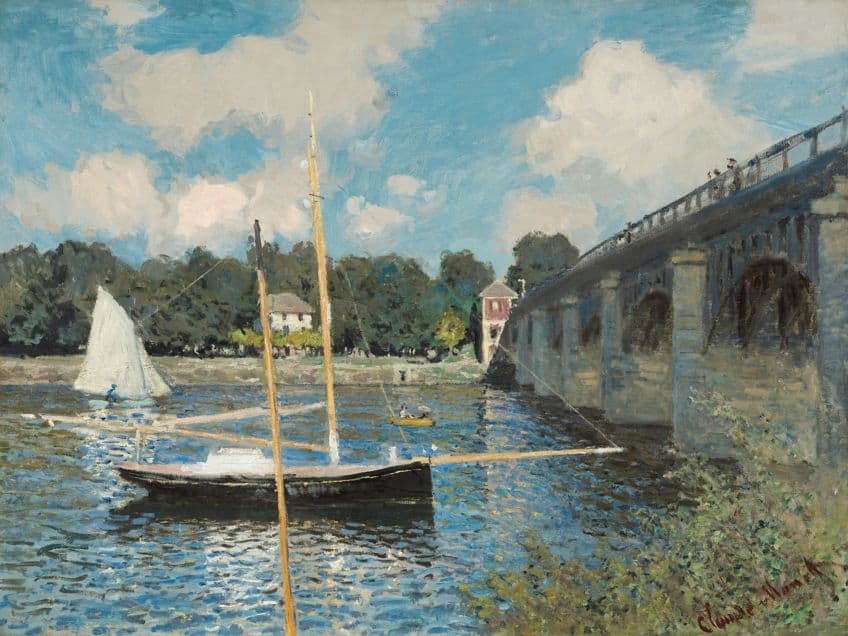
Impressionist artists sought to capture the dynamic energy of the modern world and to represent the changing face of France. In Wild Poppies near Argenteuil, Monet captured the beauty and vitality of the natural world, which was a source of escape and solace for many people during this time of great change.
A Visual Analysis of Wild Poppies near Argenteuil by Claude Monet
This work depicts a field of poppies, with the flowers in full bloom, swaying in the breeze. Let us do a visual analysis of this painting and then a comparative study of Wild Poppies near Argenteuil and Woman with a Parasol – Madame Monet and Her Son (1875).
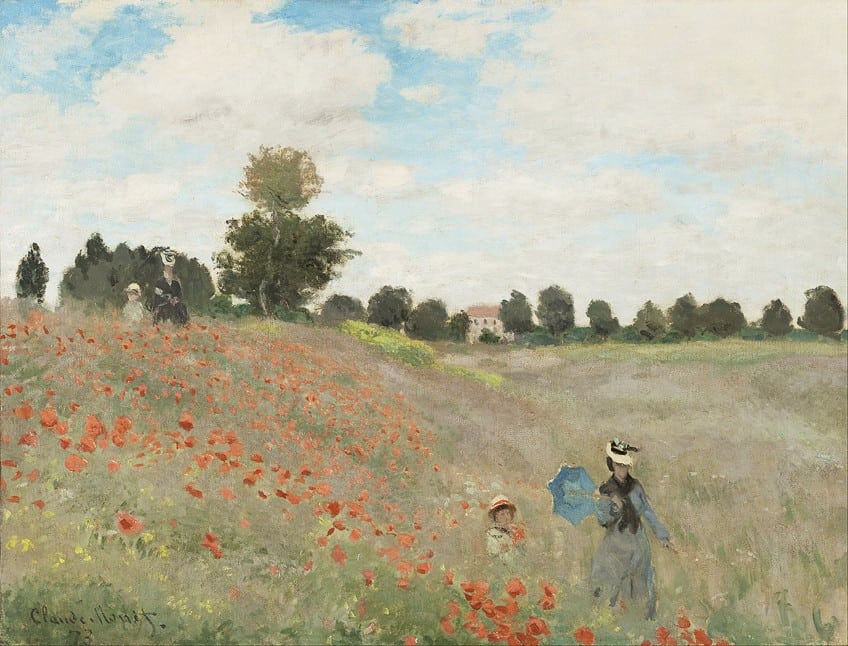
Compositional Overview
Wild Poppies near Argenteuil is a landscape painting that features a poppy field set against a backdrop of trees and sky. The composition is characterized by its loose and spontaneous brushstrokes that create a sense of movement and vitality in the painting. There are two sets of figures in the poppy field painting: two pairs of mothers and their children. The one set is in the foreground in the right corner of the artwork. The other pair is in the background, upper left corner.
These pairs make a triangle composition with a house in the middle background of the painting. This triangle composition creates a sense of equilibrium in the artwork.
Subject Matter
The painting’s subject matter is the poppy field, which is depicted in full bloom. The poppies are depicted in great detail, with each individual flower having a unique shape and texture. The painting is set in the countryside near the town of Argenteuil, which is located just outside of Paris.
The lush, green landscape serves as a backdrop for the vibrant red poppies, creating a sense of equilibrium and peace in the composition.
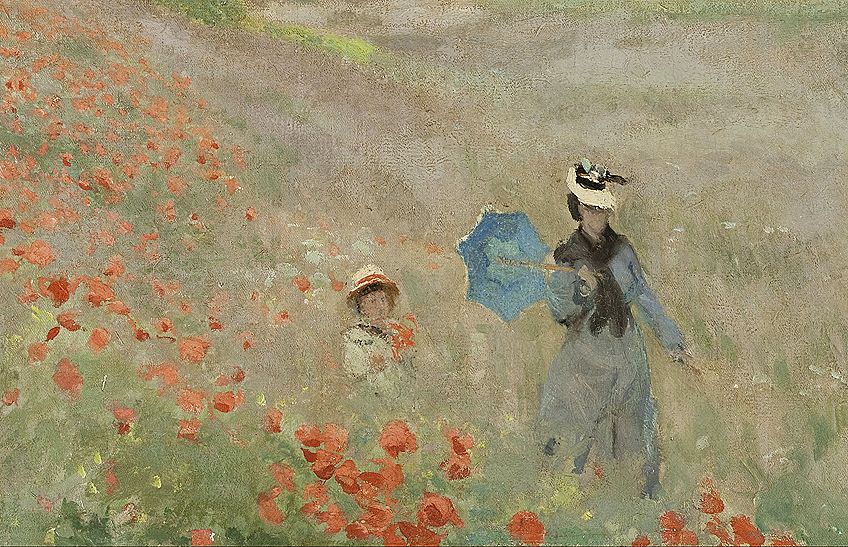
Color and Light
The color and light in this painting are striking and evoke a sense of warmth and joy. The red of the poppies is bright and strong, adding to a powerful pictorial impact. The blue of the sky is equally vibrant, contrasting with the red of the poppies and serving to enhance their intensity.
The light in the painting is soft and diffused, adding to the sense of warmth and happiness in the work. The texture in this painting is thick and impasto, creating a sense of movement and vitality.
Texture
The brushstrokes are thick and impasto, giving the work a strong sense of texture. The poppies are depicted in great detail, with each individual flower having a unique shape and texture. The thick brushstrokes used by Monet give the work a strong sense of depth and dimension, making the poppies seem to pop out from the canvas.
The impasto brushstrokes also give the painting a unique, textured quality that sets it apart from other landscape paintings.
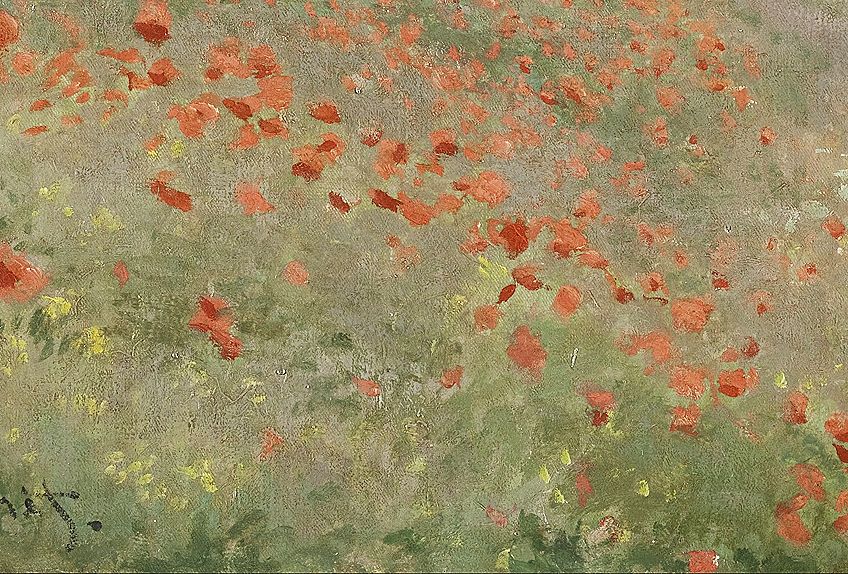
Perspective
The perspective in this painting is somewhat unique in that it is not quite a traditional landscape view. Instead, Monet has chosen to depict the poppies from a slight bird’s-eye view, which gives the painting a sense of spaciousness and allows for a more expansive view of the landscape.
The form of the poppies is also depicted in a unique way, with the individual flowers appearing to be almost flat and abstract, rather than realistically modeled.
Symbolism
The wild poppies in this painting have a symbolic meaning, often representing the fleeting nature of life and beauty. The poppies are also sometimes seen as symbols of remembrance, particularly in reference to soldiers who have died in the war. In this painting, Monet has captured the fleeting beauty of these wildflowers, while also giving us a glimpse into the peaceful, idyllic landscape of the countryside.
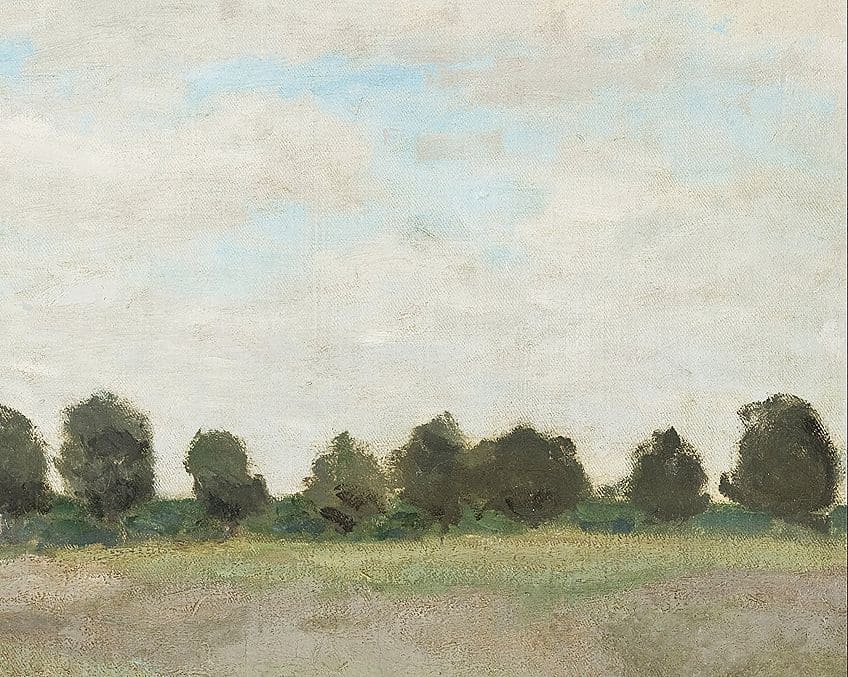
Compare the Woman with a Parasol – Madame Monet and Her Son (1875) With the Wild Poppies near Argenteuil by Claude Monet
Woman with a Parasol is a portrait of Monet’s wife Camille and their son Jean. The painting is characterized by its soft and delicate brushwork, which creates a sense of movement and fluidity in the composition. The subject matter is a casual scene of a woman and her child on a sunny day, with the parasol serving to create a sense of shade and protect them from the sun.
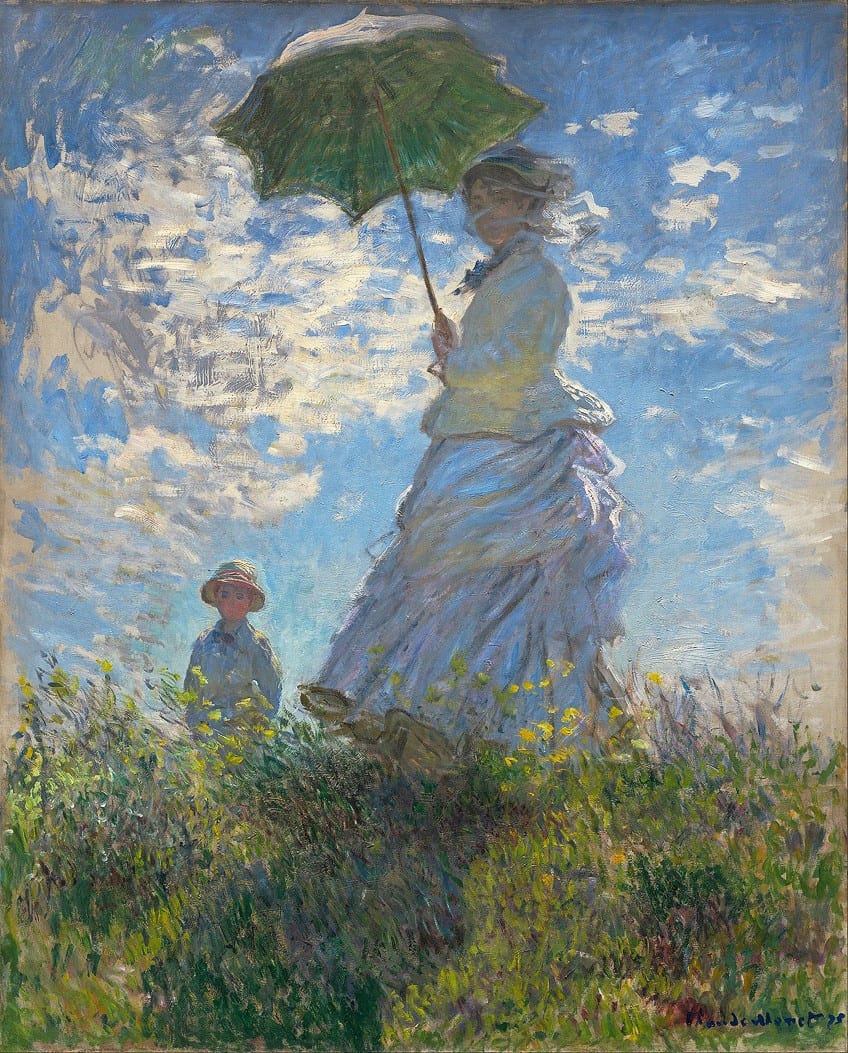
Wild Poppies near Argenteuil, on the other hand, is a landscape painting featuring a field of wild poppies. Even though there are figures in the painting, they are only in support of the landscape, which is the main focus of the artwork. The painting is characterized by its thick, impasto brushstrokes that create a sense of movement and vitality in the work.
In conclusion, Claude Monet was a brilliant artist whose talent and passion for art left a lasting impact on the world of art. Wild Poppies near Argenteuil is an example of a painting that shows this artist’s talent to capture the fleeting beauty of nature.
Frequently Asked Questions
What Makes Wild Poppies near Argenteuil by Claude Monet a Special Painting?
Wild Poppies near Argenteuil (1873) is notable for its loose brushwork. Monet was known for his loose and spontaneous painting style, and this can be seen in the way he depicted the poppies and the surrounding landscape. He used thick, impasto brushstrokes to capture the movement of the flowers in the wind, creating a sense of energy and liveliness in the painting.
What Sets Wild Poppies near Argenteuil by Claude Monet Apart From the Artist’s Other Works?
A distinctive feature of Monet’s style is his application of color. In Wild Poppies near Argenteuil (1873), he used a vibrant and intense palette, with the red of the poppies being particularly striking. This use of color reflects Monet’s belief that color was an essential aspect of painting, and that it should be used to evoke emotion and create a mood.
Was Claude Monet a Political Painter?
Claude Monet’s personal life and career were closely intertwined with the socio-political context of France at the time. He lived through the turbulent years of the Franco-Prussian War and the Paris Commune, and was acutely aware of the social and political changes taking place in France. Monet was a keen observer of his environment and was always looking for new subjects and themes to explore in his paintings. These included political art, but from the Impressionist perspective, which sought to show the slow beauty of nature in contrast to the political and industrial changes that were taking place in Europe at the time.
Nicolene Burger, a South African multimedia artist and creative consultant, specializes in oil painting and performance art. She earned her BA in Visual Arts from Stellenbosch University in 2017. Nicolene’s artistic journey includes exhibitions in South Korea, participation in the 2019 ICA Live Art Workshop, and solo exhibitions. She is currently pursuing a practice-based master’s degree in theater and performance. Nicolene focuses on fostering sustainable creative practices and offers coaching sessions for fellow artists, emphasizing the profound communicative power of art for healing and connection. Nicolene writes blog posts on art history for artfilemagazine with a focus on famous artists and contemporary art.
Learn more about Nicolene Burger and about us.
Cite this Article
Nicolene, Burger, ““Wild Poppies near Argenteuil” by Claude Monet – A Deep Dive.” artfilemagazine – Your Online Art Source. March 22, 2023. URL: https://artfilemagazine.com/wild-poppies-near-argenteuil-by-claude-monet/
Burger, N. (2023, 22 March). “Wild Poppies near Argenteuil” by Claude Monet – A Deep Dive. artfilemagazine – Your Online Art Source. https://artfilemagazine.com/wild-poppies-near-argenteuil-by-claude-monet/
Burger, Nicolene. ““Wild Poppies near Argenteuil” by Claude Monet – A Deep Dive.” artfilemagazine – Your Online Art Source, March 22, 2023. https://artfilemagazine.com/wild-poppies-near-argenteuil-by-claude-monet/.


